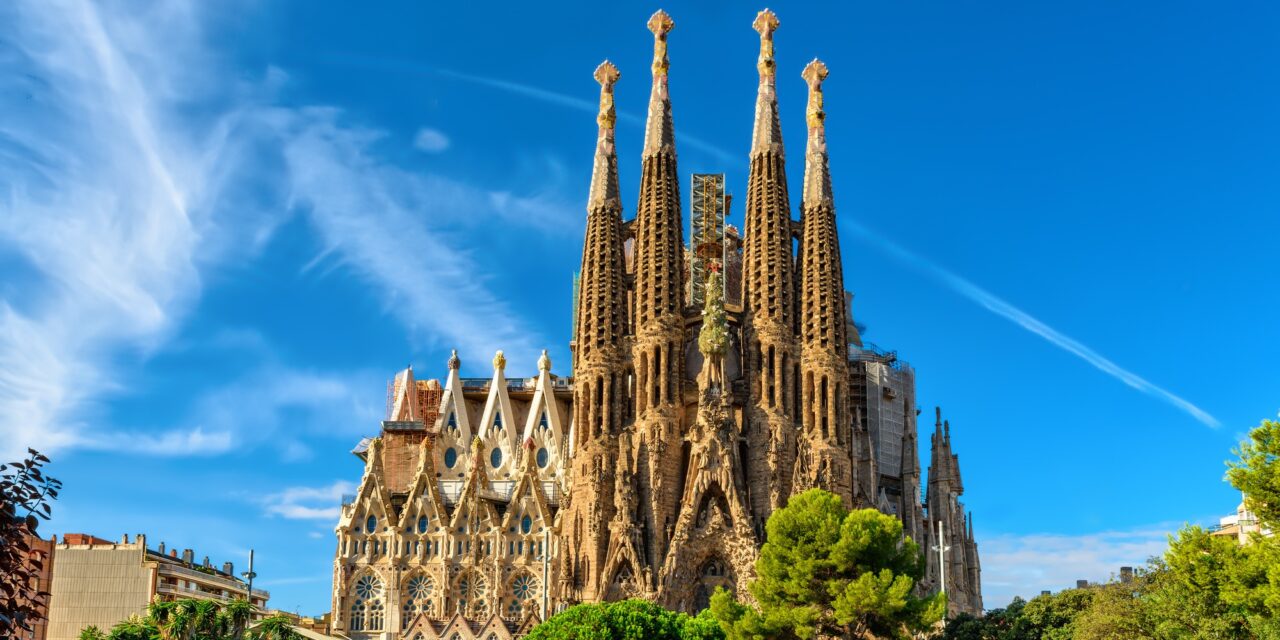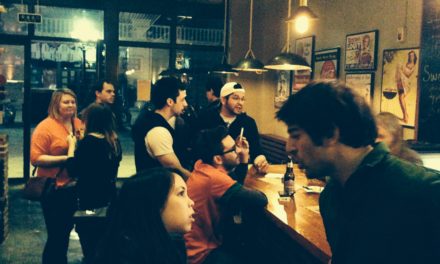The “Unfinished Church” is almost finished.
When I first saw the Sagrada Família (Holy Family) during the 1992 Summer Olympics in Barcelona, one of the world’s longest-running construction projects was still in its early stages even though groundbreaking had taken place 110 years earlier.
At that time, only a handful of the 18 planned towers had been built, the floors were dirt and there was no roof. When my wife Pat and I visited the basilica a few weeks ago, the changes were dramatic.
The church now has a roof supported by 36 angled pillars, there’s high-tech cork flooring and the final “Jesus” tower is scheduled to be completed next year, marking the centennial of architect Antonio Gaudi’s death. At 566 feet, the last tower will be the highest structure in Barcelona after it’s topped with a giant cross.
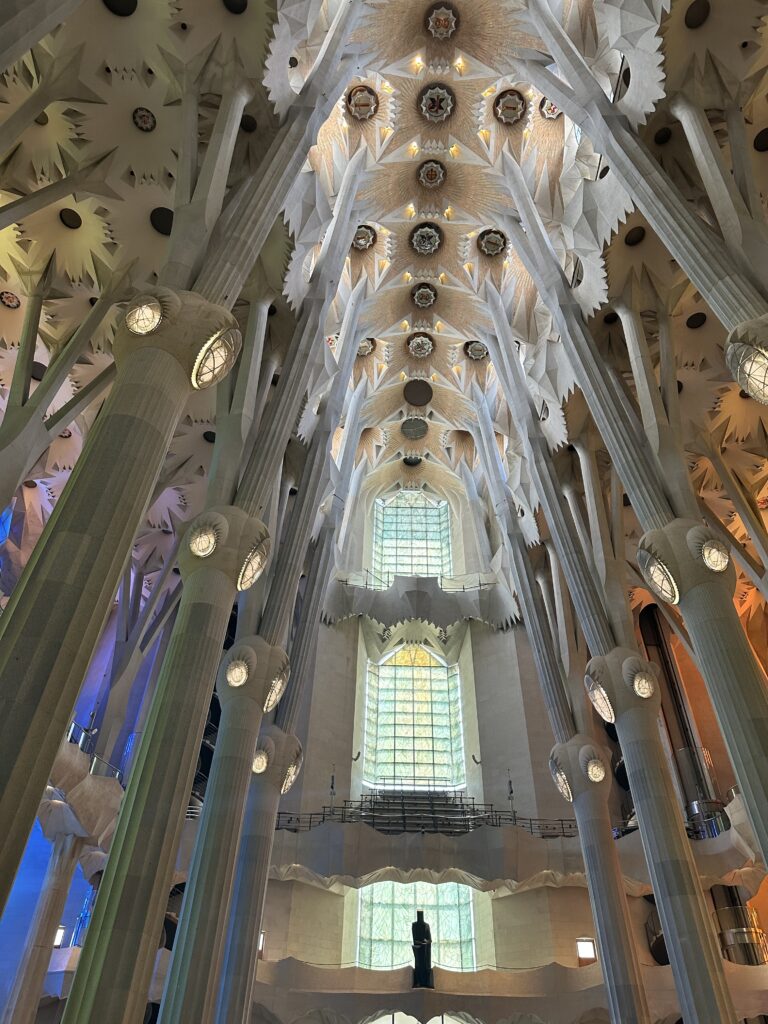
The Sagrada Família isn’t the only thing that’s undergone a huge change in Barcelona since I covered the 1992 Olympics for The Associated Press.
Thirty-three years ago, the picturesque Spanish city was a largely undiscovered gem outside of Europe. In fact, the main reason Barcelona wanted the Olympics was to raise its international profile and attract tourists who would spread the word about its architectural splendor, lively nightlife and rich Catalan culture.
Beware of what you wish for.
Today, there’s a growing backlash against the hordes of tourists who crowd the streets, drive up rental prices and generally make life uncomfortable for local residents. The discontent reached a boiling point last summer, when protesters squirted water pistols at visitors sitting in outdoor cafes and carried signs saying “Tourists go home’’ and “Barcelona is not for sale.’’

I didn’t experience any anti-tourist sentiment when I recently returned to the city, though a tour guide mentioned periodic protests by residents who live near popular tourist sites like Sagrada Familia and Guell Park. While the guide conceded that thousands of photo-snapping foreigners can lead to traffic jams, noxious noise and unruly behavior, she also pointed out that tourism is vital to Barcelona’s economy and scaring away visitors would hurt more locals than it would help.
Gaudi, whose nature-inspired, modernist architecture is seen throughout the city, was killed in a trolley accident in 1926 and construction of Sagrada Família has been slowed or stopped over the years because of funding shortages, the Spanish Civil War and COVID.
The 18 ornate spires represent the Twelves Apostles, the Four Evangelists, the Virgin Mary and Jesus Christ. The Evangelist towers are crowned by sculptures of their traditional symbols, such as a winged lion for Saint Mark and an eagle for Saint John. The church also has three elaborate facades adorned with sculptures of cherries, peaches, apples, figs, grapes and other symbols of the fruits of the Holy Spirit.

The cavernous interior is also impressive, with its tree-like columns, stained glass windows that create a rainbow effect from streaming sunlight, and winding staircases leading to a balcony seating area for the choir. Suspended above the altar is a bronze sculpture of Christ’s crucifixion, hanging below what looks like a golden umbrella.
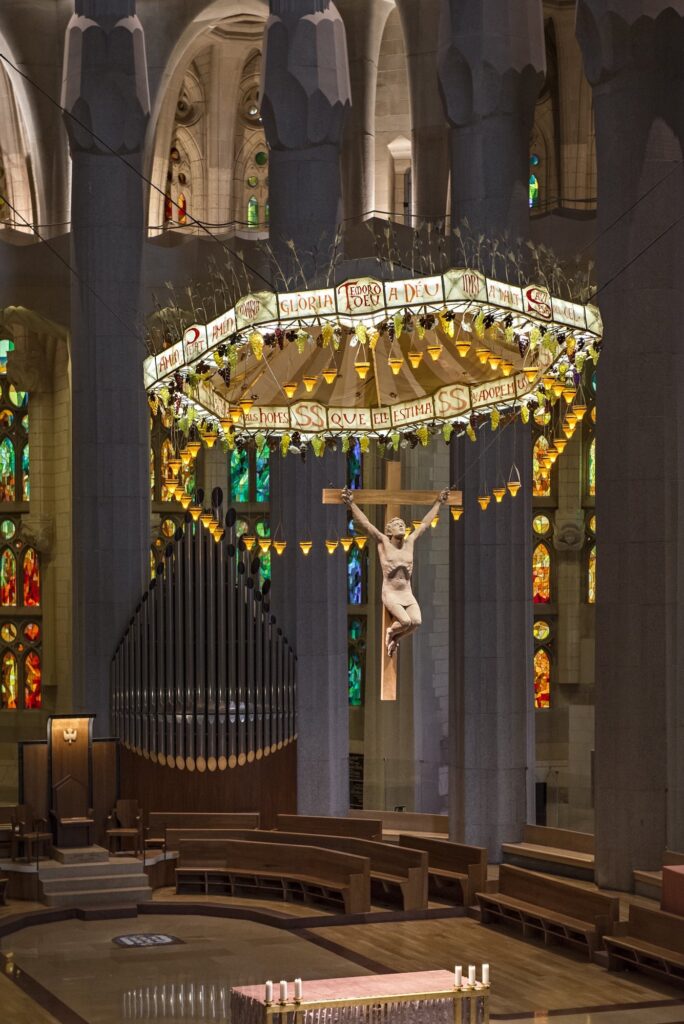
However, there’s still one major hangup delaying completion of the project, a controversial plan to build a giant staircase entrance and adjacent park that would require the demolition of several blocks of homes and businesses and would displace an estimated 3,000 people. Even if that happens, it will probably taken another decade to finish.
Gaudi lived for 20 years in Guell Park on a hill overlooking the city. He designed the park for Eusebi Guell, a Catalan industrialist who envisioned the site as an exclusive housing development. When the project failed, it was turned into a public park that is now a World Heritage Site.
The park entrance is flanked by what looks like a pair of giant gingerbread homes (originally designed as gatehouses) that were eventually converted into a museum and gift shop. Once inside the park, you encounter a fanciful world of curving, mosaic tile benches, stone columns shaped like tree trunks, and a kaleidoscopic snake fountain whose head is sometimes described as a serpent, salamander or dragon.
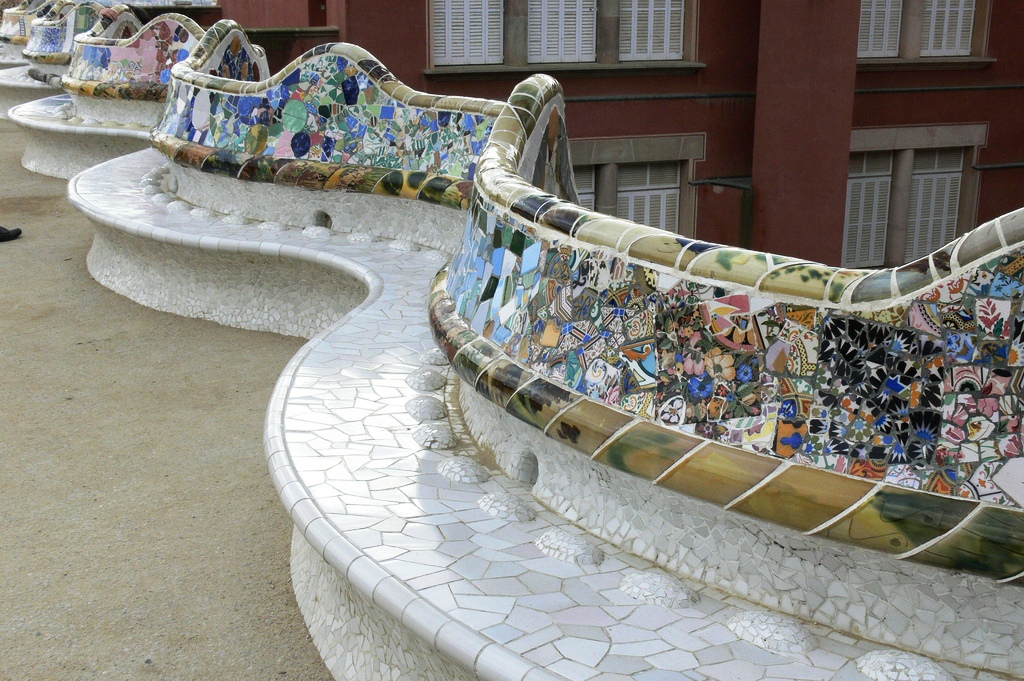
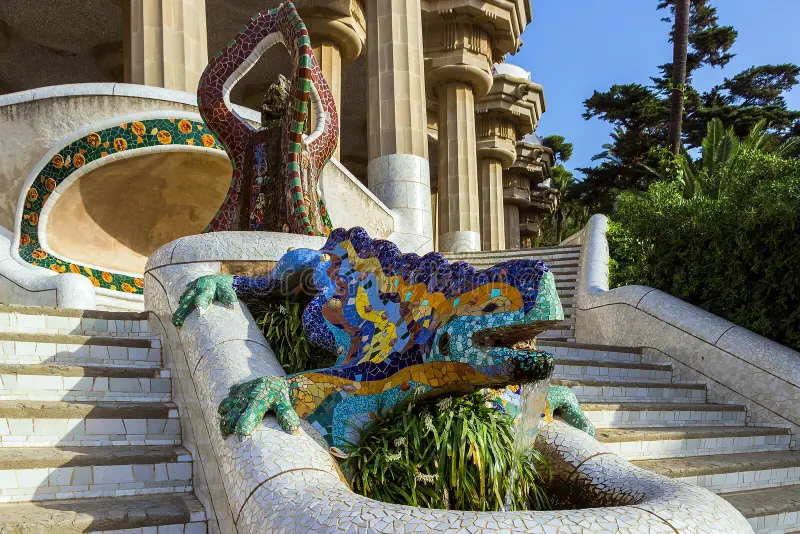
After returning to our hotel near the center of town, we walked down several boulevards lined with fancy name-brand shops and outdoor cafes set up on a median strip, requiring waiters to shuffle across the street to pick up food from the kitchens in their main restaurants. (We stayed away from La Rambla, a famous tree-lined pedestrian boulevard that is now overrun with tourists, trinket shops, bars and street performers.)
Barcelona is a foodie’s paradise, offering a smorgasbord of delectable fish, meats and cheese. We stopped at a corner shop with cured Iberian ham parts hanging from the wall. Some of the hams have been dried for six years and sell for up to 3,000 euros. We settled for some fresh bread soaked in tomato sauce, a selection of gourmet cheese and couple of Spanish wines.

We later grabbed a bite at a cafe where Dali and Picasso hung out, and visited a shop that sells figurines of famous people like Donald Trump, Lionel Messi and Michael Jackson squatting to take a dump. This is a tribute to an old Catalan saying that roughly translates to: “Eat well, shit well and don’t be afraid of death.” Not exactly poetry, but I get the point.

Speaking of eating, forget about early-bird specials in Barcelona. Locals usually eat dinner about the time most Americans are getting ready for bed.
The following day, we took a 90-minute drive up to Costa Brava, a scenic coastal region in northeast Spain that stretches to the French border. The area is dotted with Medieval seaside towns that are popular vacation sites for Barcelonians and French Catalans from across the border. We walked past a couple of topless beaches where, frankly, some of the ladies would have been better off fully clothed.


Barcelona is the capital of Catalonia, an autonomous region of Spain with its own distinct history, culture and language. There has long been a strong movement to separate from Spain and in 2017 an independence referendum was overwhelmingly passed. However, the referendum was declared unconstitutional, separatist leaders were jailed and Catalonia remains part of Spain.
I didn’t have time to revisit the Olympic Stadium where I covered the classic long jump competition between Carl Lewis and Mike Powell in 1992. While we were in Barcelona, however, the stadium was the site of a soccer match between archrivals Real Madrid and Barcelona, and it seemed half the city was wearing the home team’s red and blue jerseys.

Barcelona came from behind to win 4-3, virtually clinching its league championship and triggering many alcohol-fueled celebrations in the city.
